Meredith Davis's Blog
March 26, 2025
To Read or Not To Read, That is the Question
To read or not to read may seem like a strange question for an author. Of course I should read! I’ve loved reading my whole life.

But if you’re an avid reader turned writer, you know there are lots of things that get in the way of your first love. Like the need to write, and once you get published, the need to market. As a busy parent who was squeezing writing into nooks and crannies of time, I was reading much less than I did as a kid. When I started graduate school at Vermont College of Fine Arts, one of the requirements each month was to read 10-15 books each month. Best. Homework. Ever. Something about making it a requirement added the gravitas I needed to bring myself back to the page with no pen or keyboard attached.
After publishing two books, I’m about two months from the release date of my third, The Minor Rescue, coming out May 6, 2025.
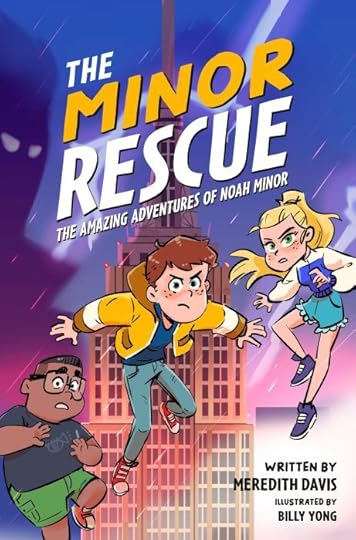
I’m in the throes of marketing, a busy season, but I’m determined to make it fun, and to not give up reading. I made marketing a game, melting wax for seals on invites that went to hundreds of potential Gravitas agents. I call it Operation Mobilize, a coordinated effort to get The Minor Rescue into the hands of kids with the help of friends who want to play my game, and help the cause. (It’s not too late if you want to join! Sign up here.)
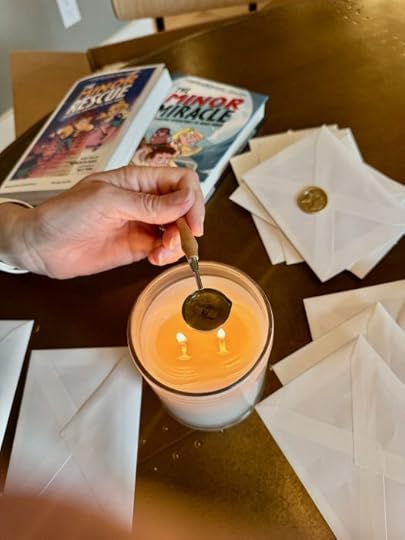
Marketing also means securing blurbs. I can be a big, stressful ask. I reached out to Anne Bustard, Carolyn Leiloglou, Mari Mancusi, Susan Fletcher and Varsha Bajaj, accomplished writers I admire, and they all said yes! Phew. And wow!
How can I pay them back? And how can I keep reading in such a busy season? The two questions may seem unrelated, but I realized they aren’t. Each day I’ll dedicate time to reading their work. As in block off an hour or two on the calendar. And then I’ll share what I love about it. I’ll fight stress by sitting down with good books, doing nothing more than something I love. Reading. And talking about what I’m reading. I’ll be doing that over on my substack where I also post monthly themed picture book reviews. If it’s for kids, and I love it, you’ll hear about it there. You can read about Anne Bustard’s book Far Out! here and subscribe to see the review for each of my blurbing authors.
The post To Read or Not To Read, That is the Question appeared first on Meredith Davis.
March 24, 2025
What’s Behind and Up Ahead
I started this post thinking it might be my last. At least, my last here. I’ve been posting monthly for the past two years over on Substack at Meredith Davis: Author with a Kidlit Crush (formerly known as Face Out) recommending themed picture book lists and some middle grades. You can find an archive of themed book recs on the “reviews” tab of this website. I wasn’t sure I had anything to say in this space anymore.
But then I started looking back at this blog, all the way back to 2007. That’s when I first started writing for friends and family in the digital space, chronicling our family’s nine and a half month trip around the world here.

Some of you have been with me since that beginning! In 2011, I started blogging on this website with this post as we began the process to adopt. I continued telling stories here. The journey that led us to Rebeka started here. There was so much to say about our time with Rebeka! (She’s coming to visit this summer! Stay tuned for more Rebeka stories and pictures and updates!)
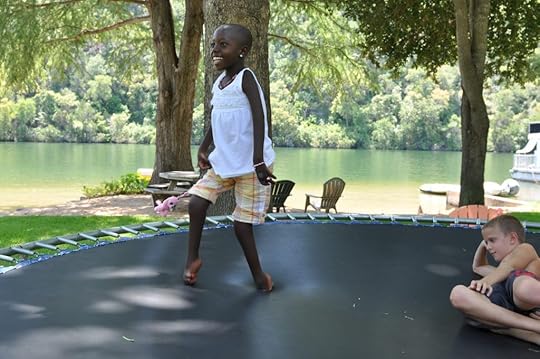
There were lots of musings about writing and eventually the celebration of book contracts. There were posts about foster babies, marriage proposals, and then came picture book reviews that started here in 2021. And then there was the thrill of becoming a grandparent. Grandbaby number two is due in September (stay tuned for those stories and pictures).

Looking back, I realized I’m not done here. No way. This will be the place where I continue blogging about the stories in real life, the little and big ones. We don’t know what’s waiting around the river bend, but I’m certain there will be stories to share. A little housekeeping: on the subscribe button in the menu, you now have choices. You can subscribe to this blog for all kinds of real life stories. Subscribe to my substack for children’s book reviews, and/or subscribe to the Bible Poetry Project to receive my poems. I’m writing one for every chapter of the Bible (a whole other story I haven’t shared here!)
Thanks for being on the other end of this blog. Some of you have been following these stories for many, many years, and I am grateful we’re connected in that way. I’d love to hear your stories, too, whether it’s in a comment here or, even better, over a meal around a table.
The post What’s Behind and Up Ahead appeared first on Meredith Davis.
January 30, 2025
Storytime: Determination
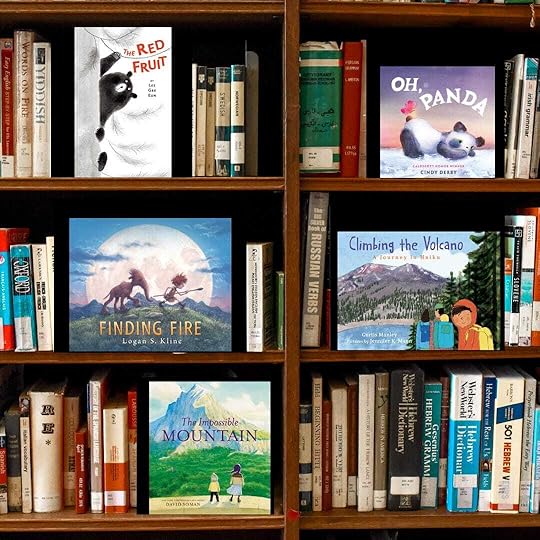
What does it take to stick to a New Year’s resolution? The same thing it takes for a baby to get their thumb in their mouth, or a toddler to tie his shoes. Determination. If we can model it through powerful, whim
sical, beautiful stories it can encourage even the most frustrated human to try one more time. I rounded up a few that my daughter, my grandson, and I love.
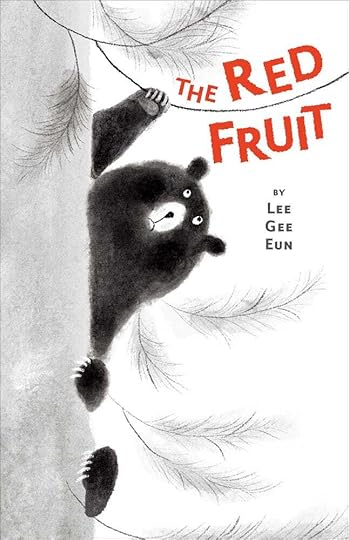
The Red Fruit by Lee Gee Eun
Beautifully designed, the tall and thin shape of the book mimics the tree this hungry bear will climb, in search of more delicious red fruit. Mostly black and white with splashes of red, the illustrations play with scale from page to page. Bear keeps going until he finally makes it to the top of the tree, doesn’t find red fruit but reaches for a huge red sunrise, falls, and several pages later lands in the arms of his mother, who has a bunch of red, delicious fruit. Spare text, and perfectly satisfying.
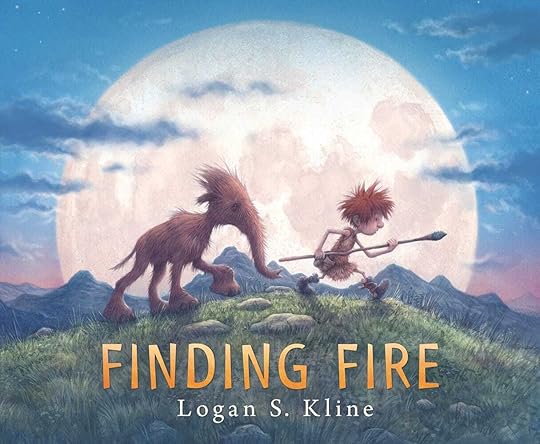
Finding Fire by Logan S. Kline
A plucky, red-headed boy sets off to find fire for his prehistoric family, fording rivers, fending off ferocious wolves, and continuing even when he’s injured. He’s determined to succeed. When he saves a struggling baby mammoth, they become friends. Together, they finally find a small spark after a lightning storm and bring fire back home. Mostly wordless and filled with emotion, great for all ages.
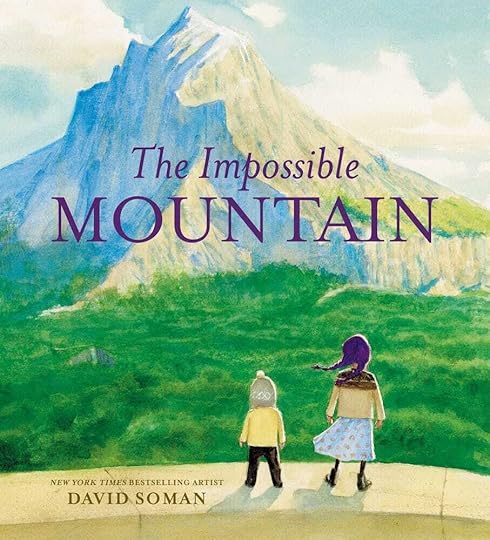
The Impossible Mountain by David Soman
Told in the language of legend, purple-haired Anna and her little brother Finn leave their small, safe village to climb the Mountain and see the world. They’re warned about the River, the Cliffs, and the Great and Terrible Bear, and when the going gets tough, they wonder if it really is impossible. But they’re determined, they don’t stop, and they make it. End paper to end paper, the illustrations are so good and the fast pace and suspense keep even my two-year-old grandson entranced.

Climbing the Volcano: A Journey in Haiku by Curtis Manley, illustrated by Jennifer K. Mann
Told with spare haikus, a boy and his family wake up at the base of a dormant volcano to clear sky and chilly air, the campground “cloudy with our breath.”
how do you
climb a mountain?
one step at a time
Great advice no matter what the mountain is. There are mosquitos at first, then tiny toads, snow, bobcat tracks, lunch on the trail, and a hawk. The trail gets steep and it isn’t always easy, but they make it. Sweet illustrations, with lots to see on every page.
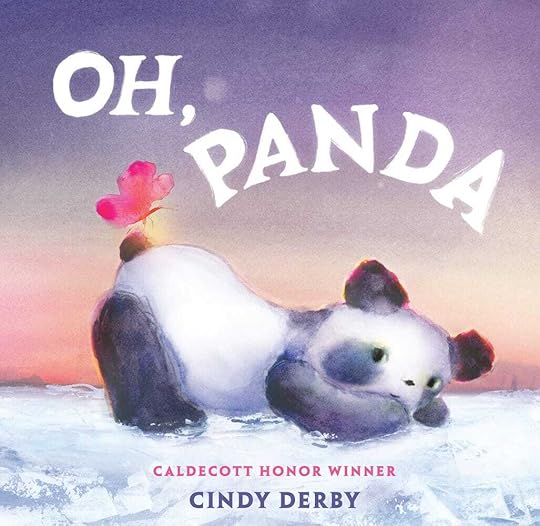
When Panda sees a pink butterfly and tries to follow it up a hill but fails, the narrator sympathizes. “I understand you want to climb that hill. But you’re still a bit too small.” Undaunted, Panda keeps trying. “Look how far you’re getting! Keep going! You’re almost there!” says the narrator. Finally, at the top, Panda sees a whole stream of butterflies, stretching across a beautiful pink sky. All that hard work was worth it!
What I’m reading:
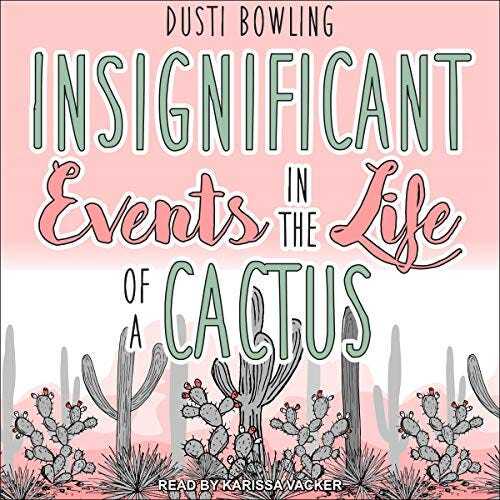
Insignificant Events in the Life of a Cactus by Dusti Bowling read by Karissa Vacker
When her parents move so her dad can take a new job, 13-year-old Aven has to deal with a whole new crop of kids and their stares (she has no arms), but she’s got a mystery to solve and no time for pity. Loved the wit, wisdom, sweetness and spot-on authentic characters. This book made me cry.
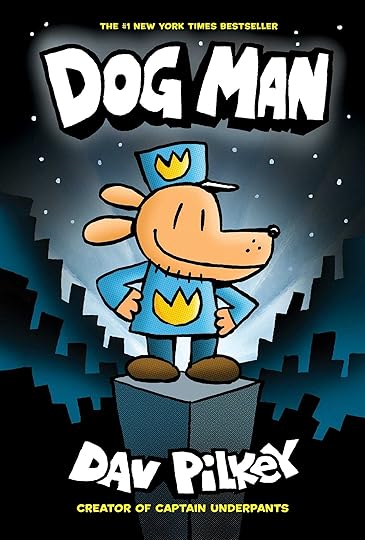
Now on his 13th installment to the series, this first book has funny characters, off-the-chart imagination, and fun flip-o-ramas. I’m a huge Dav Pilkey fan, highly recommend his Dragon series, too (less potty humor, lots of heart).
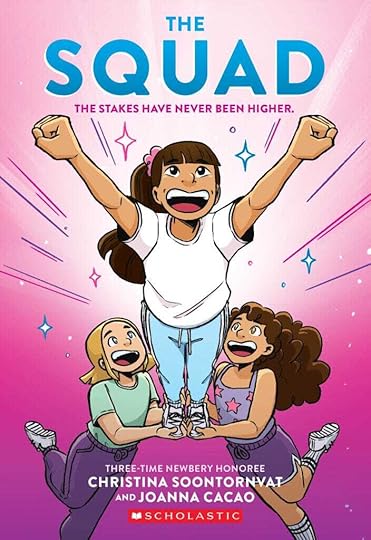
The Squad by Christina Soontornvat and Joanna Cacao
I’m on a bit of a graphic novel kick. This second book in the series, a middle school memoir, brought me back to 8th grade and all the feels. Made me want to give middle school Christina a hug and a high five, it’s fun while authentically dealing with hard issues, like divorce.
The post Storytime: Determination appeared first on Meredith Davis.
December 18, 2024
Storytime: Giving
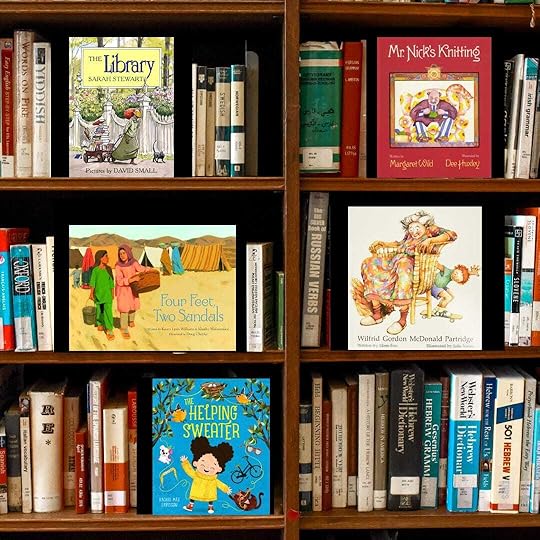
If you’re interested in Christmas specific books, you can read some of my recommendations in this Books for the Season post, or in Christmas II. This December I’m focusing on picture books about giving, with shorter descriptions and adding a “what I’m reading” section at the end. As you shop for and make gifts for the ones you love this season, I hope these books get you in the spirit. And if you’re looking for a special middle grade book about the superpower of friendship, please consider my most recent middle grade The Minor Miracle (book two coming May 6, 2025!)
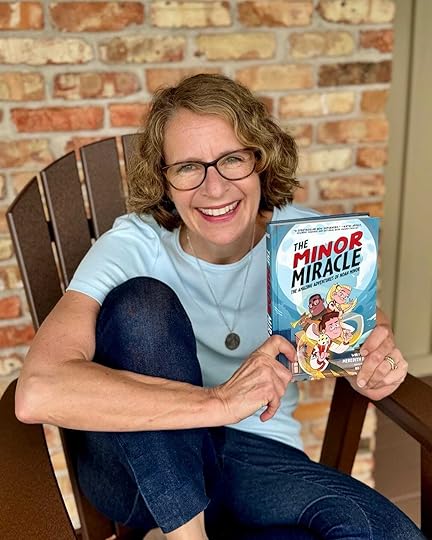
And now, for books about giving:
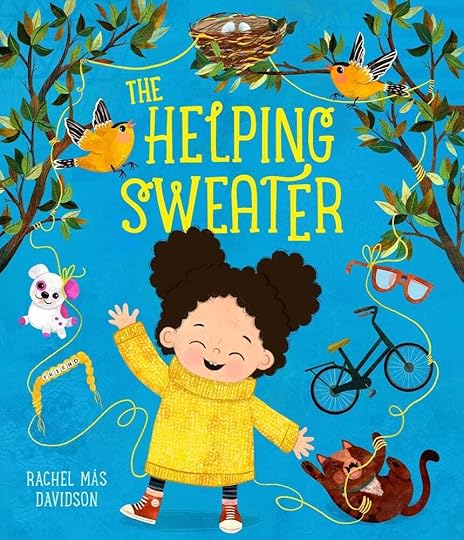
The Helping Sweater by Rachel Más Davidson
A girl’s favorite sweater begins to unravel, but when she realizes the yarn she loses benefits others, from fixing a nest or making a friendship bracelet to stitching together a bully’s pants, she continues to share yarn until her sweater is entirely gone. Luckily, someone gifts her a new sweater and when it snags, she knows just what to do.
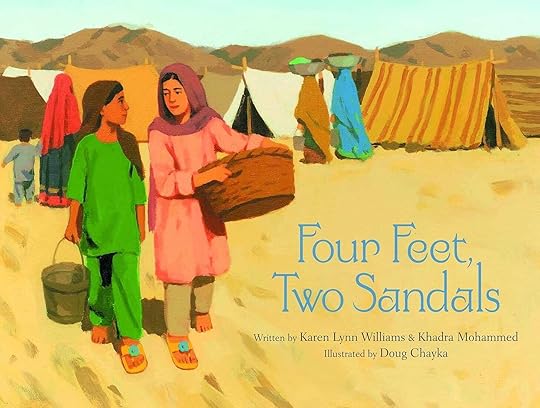
Four Feet, Two Sandals by Karen Lynn Williams and Khadra Mohammed, illustrated by Doug Chayka
Two girls share one pair of sandals while living in a refugee camp, taking turns wearing them every other day until the day one of the girls gets to go to America. It’s a sweet story about the gift of friendship, and how something as small as a sandal can be a most precious gift.
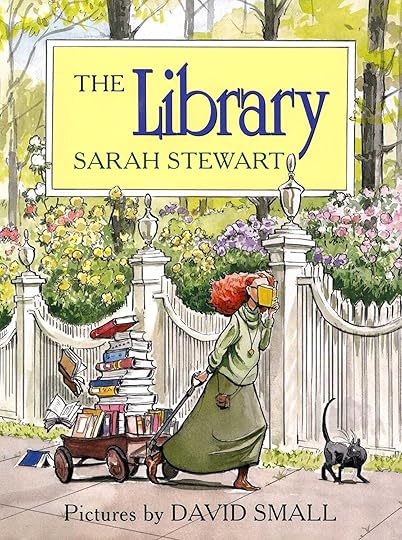
The Library by Sarah Stewart, illustrated by David Small
What to do when you spend a lifetime collecting books, until they climb the walls and block the doors? Donate them, of course! Donations totally count as gifts. Love the rhyming text and illustrations that capture the perfect moments of the story and I love this author/illustrator duo.
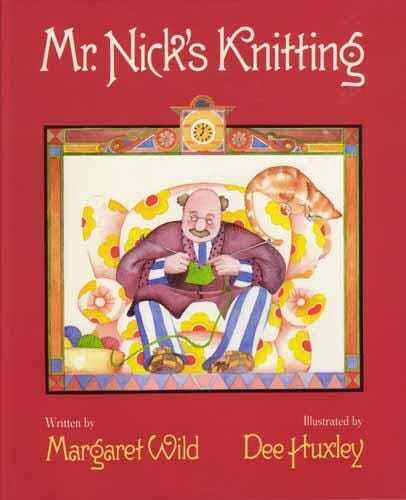
Mr. Nick’s Knitting by Margaret Wild, illustrated by Dee Huxley
Every morning Mr. Nick and Mrs. Jolley ride the train into the city, looking out the windows and knitting side by side, until the day Mrs. Jolley doesn’t show up. She’s sick and sad, stuck in a white, boring hospital room until Mr. Nick brings her a blanket he knitted. Each square is a scene from out the train window, the perfect gift to lift her spirits.
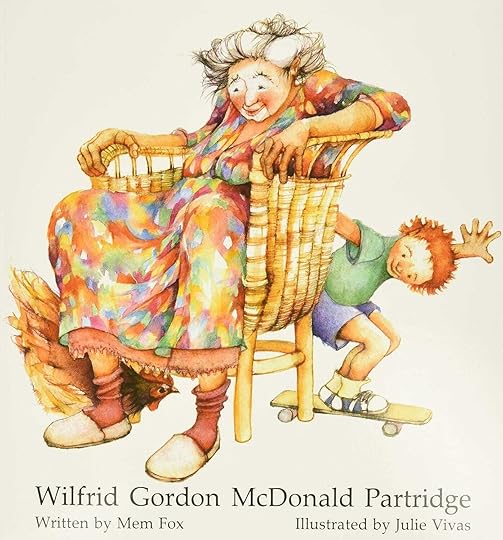
Wilfrid Gordon McDonald Partridge by Mem Fox, illustrated by Julie Vivas
You can’t go wrong with this author illustrator pair. A young boy lives next door to an old people’s home, and he knows them all. When he finds out Miss Nancy has lost her memory, he asks all the residents what a memory is, and then gathers things that are warm, old, sad, happy and precious. They end up working in unexpected, sweet ways to help Miss Nancy remember.
What I’m reading: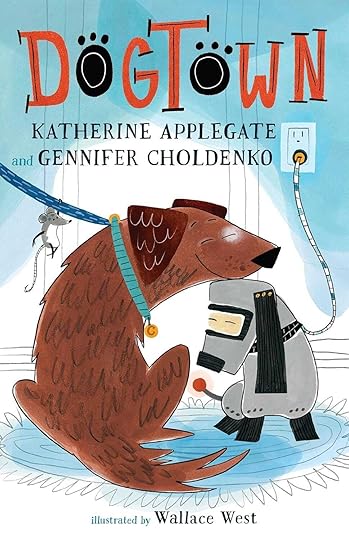
Dogtown by Katherine Applegate and Gennifer Choldenko, illustrated by Wallace West
If you’ve got a middle grade reader in your life, I highly recommend this fun read. Super short chapters, lots of illustrations, mystery and a quirky world where robot dogs coexist with regular dogs. Lots of heart and humor and a super happy ending, told from the POV of a three-legged shelter dog.
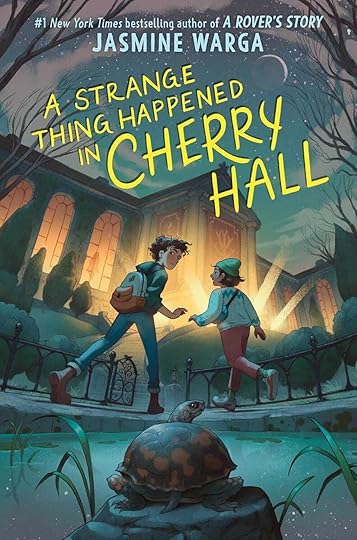
A Strange Thing Happened in Cherry Hall by Jasmine Warga
Love the friendship, the mystery, the turtle who’s seen it all and finds a way to communicate, and the art museum setting. This is a fast-paced and fun read.
The post Storytime: Giving appeared first on Meredith Davis.
November 21, 2024
Storytime: Friends
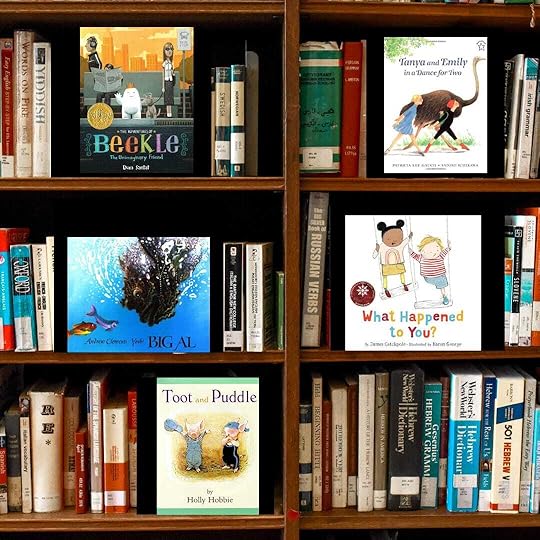
My grandson is two and a half years old, and just starting to make his first friends. Some from school, some neighbors, some his age and some older kids who think he’s cute and fun. This month I chose picture books that look at friendship from different angles. There’s the world of imaginary friends, piglet BFF’s who love different things, and stories about how to make a new friend even if it’s hard, or scary, or seems destined to doom. I hope you find time this month to share some stories with the ones that you love.
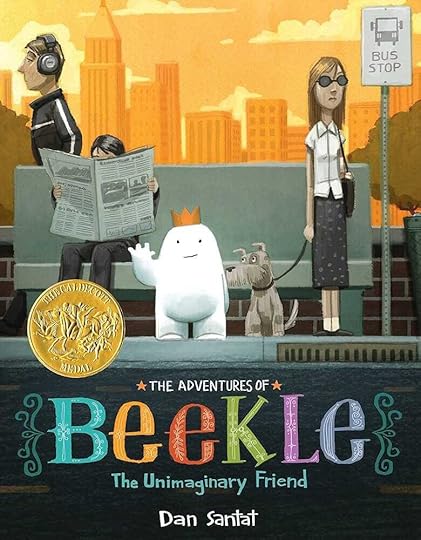
The Adventures of Beekle: The Unimaginary Friend by Dan Santat
Beekle is the cutest little imaginary friend you ever did see, and this book has a fun twist in that it’s the imaginary friend who’s looking for a kid. Imaginary friends are born on an island, waiting to be imagined by a real child and given a name. When this particular chubby white creature’s turn never comes, he goes looking in the real world. A lot of the real world is boring black and white, and even when he finds a playground where there are tons of kids with imaginary friends, he remains alone.
He climbs a tree, and along comes a girl whose drawing has blown onto a branch. He brings it to her, and sees that it’s a picture of her with a creature just like him. After a little awkwardness, she gives him his name. He’s Beekle, and they are perfect together. This story speaks to not giving up when you’re looking for that special friend. Keep your eyes peeled, and you’ll eventually find someone. Also, there’s nothing wrong with having an imaginary friend. 
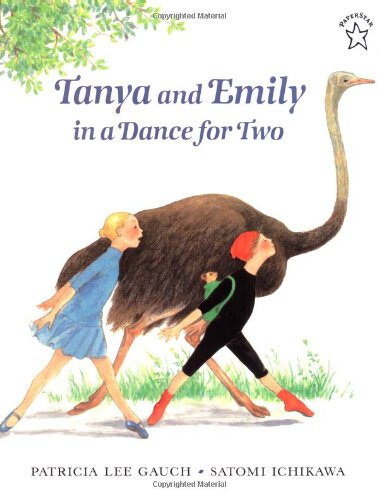
Tanya and Emily in a Dance for Two by Patricia Lee Gauch, illustrated by Satomi Ichikawa
You may remember Emily from the book Dance, Tanya in my post about Love. In this sequel Tanya has grown older, and she still loves to dance. She’s the smallest and the wiggliest in her class, but what she lacks in skill she makes up for in passion. When Emily joins the class, anyone can see she’s a “real” ballerina. The illustrations are precious as Tanya watches the new girl in amazement and admiration, but the two girls don’t connect. After class, they go their own ways, until the day they take the same path through the park.
The path passes animals, and when Emily sees Tanya dancing and asks if she’s doing a jeté, Tanya explains that she’s doing an ostrich as she prances alongside a real ostrich. Tanya shows Emily how to do a flamingo (equilibre), and then Emily joins the game, doing a penguin. The words and pictures beautifully capture how a friendship is born, effortlessly, as two girls connect over something they love. It’s okay if one is “better” than the other in the world’s eyes. To the friends who laugh and dance together, it doesn’t matter. What does matter is that they’re never alone. Their teacher notices their friendship and puts them in a dance together at the recital, “and together, they were wonderful.”
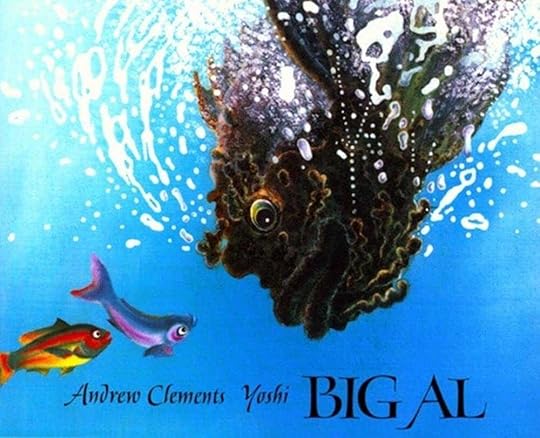
Big Al by Andrew Clements, illustrated by Yoshi
Our copy of this book is falling apart. The illustrations are bright and dramatic, and the story captures so much heart. I still remember little mouths hanging open as I read it to a group of three-year-olds, the suspense and drama completely capturing them. It starts with a big blue double page spread with a very friendly fish named Big Al hanging out all by his lonesome in the ocean. Why is he by himself? Because he’s also very, very scary! The design is brilliant.

He doesn’t blame the other fish for not wanting to be friends with him, but he’s really sad about it. He cries big, salty tears into the big, salty sea. Such a great line. So he decides to work at making friends. He tries disguising himself, being clever and silly by puffing himself up big, then hiding to look smaller, and even changing his color to fit in with a school of fish, but nothing works.
Then one day a net drops down and catches a bunch of fish. Big Al forgot all about being lonely and he forgot all about being sad. He puts his eyes on these poor fish and saves them by chomping a hole into the net. He also gets caught himself, but when the fisherman see how ugly he is they throw him back into the water. His weakness is what saves him, and when he took his eyes off himself and cared for the fish around him, he found his way to friendship. SO much goodness here.
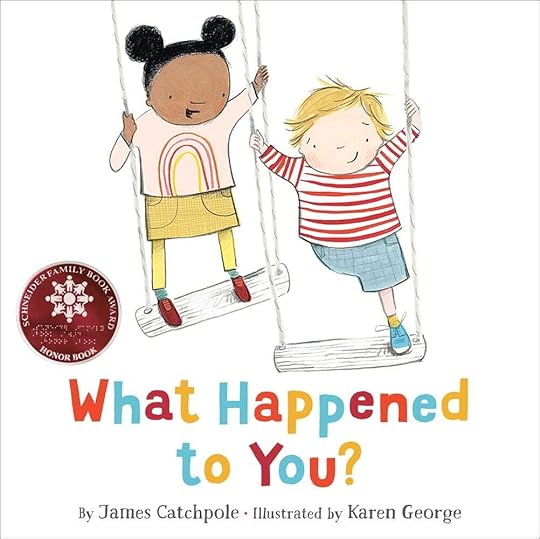
What Happened to You? by James Catchpole, illustrated by Karen George
This is a great book for talking to kids about how to treat someone with a disability, and it’s also a sweet picture of how friendships are born and how they thrive. Joe, a boy with one leg, is playing pirate on the playground. Sharks were easy compared to kids Joe hadn’t met yet. Having one leg is an added complexity, but many of us (raising my hand here) have felt that way about meeting new people. It can be a challenge. A girl comes along and exclaims, in all caps, YOU’VE ONLY GOT ONE LEG! Joe is irritated. She’s interrupted his game, but the girl persists, asking what happened to him. Joe turns the question back on her, asking “What do you think?”
The girl could have been more sensitive. Joe could have been less irritated (although as the reader we sympathize, imagining all the times he must have been asked that question when he just wants to be a regular kid.) But neither kid leaves. They keep talking. Along come more kids, and they all start guessing more and more preposterous ways he could have lost his leg. ““Was it a burglar?” asks one. Did it fall in the toilet?” asks another. It’s become a game of imagination, and Joe starts getting really frustrated.
No adults swoop in to explain, and eventually, they work it out. Joe goes back to playing, tired of the questions, and this time the kids join him. They trade names, and have fun being regular kids together. In the end, the kids never find out what happened to Joe’s leg. They recognize Joe probably gets bored of that question, and when he asks if they still need to know what happened, they don’t, and he’s happy with that. At the end there’s a really great, helpful note to parents from the author, who has one leg, addressing what to do when your child stares or asks uncomfortable questions. Because parents have a lot to learn, too, and picture books are great for that, no matter what your age.
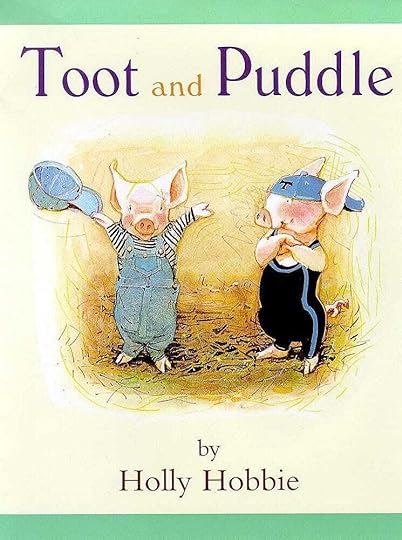
Toot and Puddle by Hollie Hobby
These are the cutest little piglets you ever did see, and the best of friends. Toot loves to travel and Puddle is a homebody, but that’s okay. Toot sets off on an adventure around the world, sending postcards back to Puddle who is having adventures at home. It’s okay for best friends to split up sometimes, to go their own ways to pursue their own passions. Side by side spreads are fun to explore with kids, asking which one they’d want to be in, and in the end, reminding them that the best friendships are strong enough to withstand some space.
The post Storytime: Friends appeared first on Meredith Davis.
October 24, 2024
Storytime: Self-Control
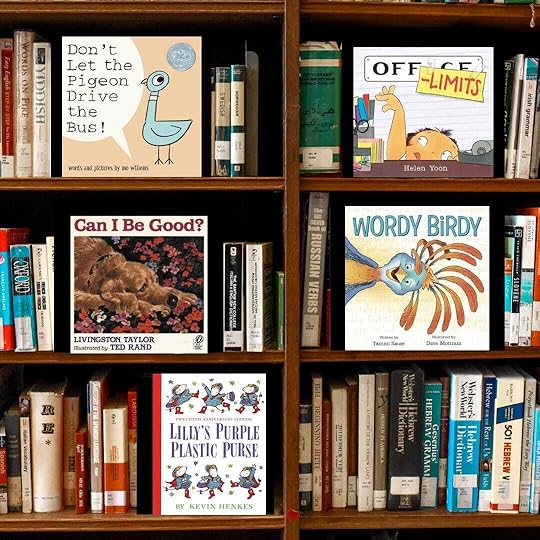
That enticing outlet, just the right size for small fingers. The ball that rolls across the street. The icy pole to lick.

There’s a lot of reasons self-control is essential to surviving and thriving, and lots of reasons it takes a while to learn how to do it. May these picture books make the path a little easier, and way more fun.
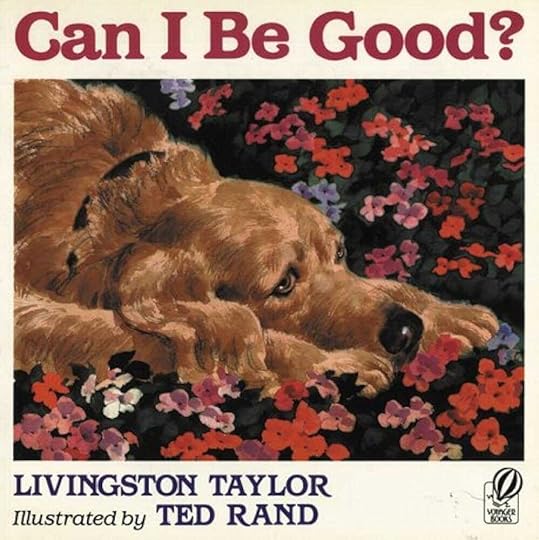
Can I Be Good? by Livingston Taylor, illustrated by Ted Rand
What is self-control? This is a great book for showing what it is not, as we see a beautiful, incorrible golden retriever wake up too early, play in the rain and then shake all over his owners, jump on the school bus, lick a kid’s ice cream cone, and chew a slipper. “It’s awfully hard to be good,” is a refrain that finally winds down to “It’s finally time to be good,” as the dog is “fed and full and feeling just fine,” curled on a rag rug with his family nearby. This dog that wants to be good, but just can’t seem to control himself. Sound like any kids (or adults) you know?
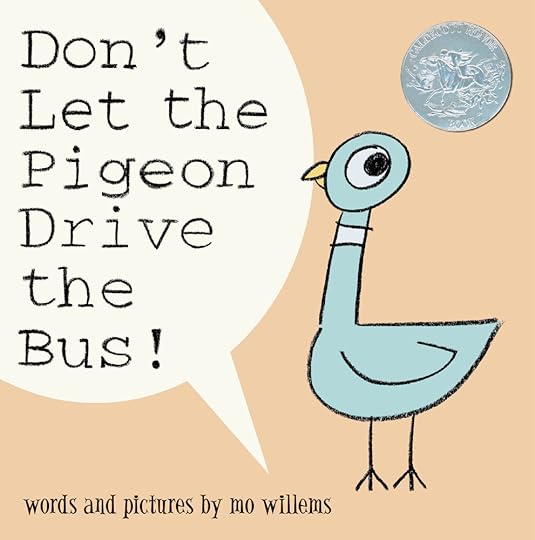
Don’t Let the Pigeon Drive the Bus by Mo Willems
I wish this book had been around when my kids were little! It’s so brilliantly meta, starting with the bus driver who warns readers not to let the pigeon drive the bus. Turn the page, and see the pigeon peeking onto the page as the driver walks off, then asking, “Hey, can I drive the bus?” Kids learn self-control in real time as the blue pigeon asks, then begs, whines and eventually throws a fit. We are not letting that pigeon drive the bus in this book! Finally the driver returns and thanks the reader for keeping the pigeon away from the wheel. Pigeon is dejected until he gets a new idea . . . maybe he can drive a truck!
It’s funny and simple, things we’ve come to expect from Mo Willems. The book reminds me of The Monster at the End of this Book which features Grover from Sesame Street. Cool fact: Mo Willems won six Emmy’s for his work on Sesame Street!
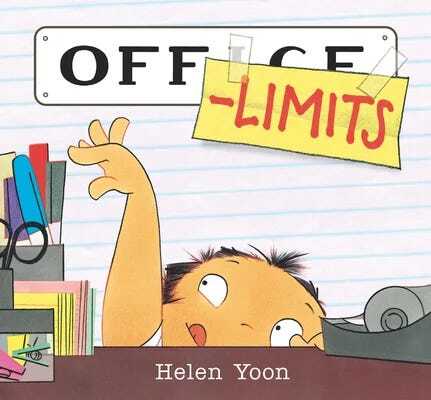
The story starts before the title page as a dad tapes a sign that reads “off-limits” to his office door. We turn the page to see the dad walking off as a kid peeks onto the page from the other side (which reminds me of a similar spread on the title page of Don’t Let the Pigeon Drive the Bus!”). Does the kid practice self-control? No!
What starts with a tiny piece of tape grows into a glorious mess as the child engages in rollicking imaginative play, paired with some great dialogue. Why, hello, Mr. Lamp! What a lovely scarf! the kid says as she wraps her dad’s lamp with tape. Do you know what would look good with your scarf, Mr. Lamp? Paper clips! Paper clips and binder clips! Colorful sticky notes add to the chaos. It’s an explosion of office products!
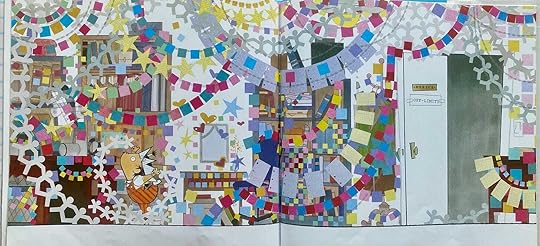
The beauty of this book? We see it isn’t just kids who have a hard time with self-control. The girl worries she’s in so much trouble when she finally leaves, but when she opens the door to her room we see Dad caught in the act.
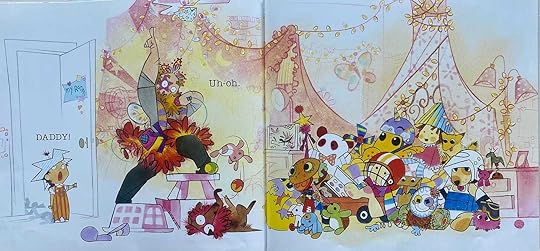
One thing can lead to another, and another. Lacking self-control can lead to a big mess, no matter how big or small you are. With a light touch, spare text and a lot of humor, this one is an easy favorite.
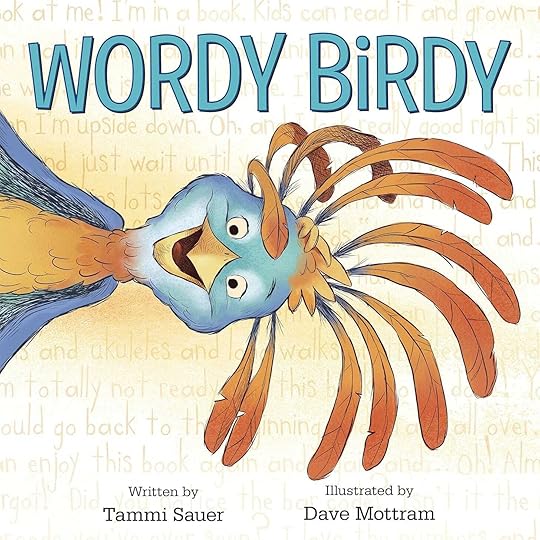
Wordy Birdy by Tammi Sauer, illustrated by Dave Mottram
This book offers a great opportunity to have some fun with voices as it tells the story in both the text and speech bubbles. Wordy Birdy is full of words (hysterical, scattered words). She’s always talking, and never listens to her friends: Raccoon, Rabbit and Squirrel. So when Wordy Birdy goes for a walk, she misses the danger signs and never hears her friends telling her to turn back. It isn’t until she encounters a big, roaring bear that she’s rendered almost speechless, with a simple, “Oh.”
She finally listens to her friends, who lead her to safety. Wordy Birdy still likes to talk, but now she’s got a little more self-control and likes to listen, too. Sweet, fun illustrations, a cast of lovable characters and lots of humor make this a great read aloud.
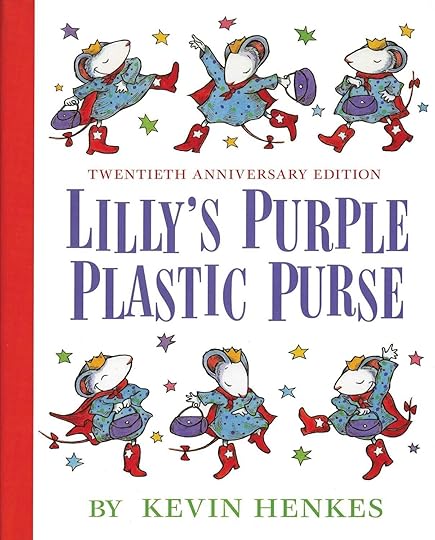
Lilly’s Purple Plastic Purse by Kevin Henkes
My kids loved this book, and it’s still beloved by many two decades later. Meet Lilly, who loves lots of things including school, squeaky chalk, her red boots, fish sticks, and her teacher, Mr. Slinger. She loves him so much she wants to be a teacher someday. But one day, Lilly gets in trouble. She brings her new plastic purple purse to school, the one that plays “a jaunty tune” when opened. Mr. Slingers says she must wait to show her classmates, but Lilly can’t wait. She shows them anyway, so Mr. Slinger puts the purse in his desk for the rest of the day.
Lilly is furious. The progression of pictures showing Lilly’s fury build is amazing.
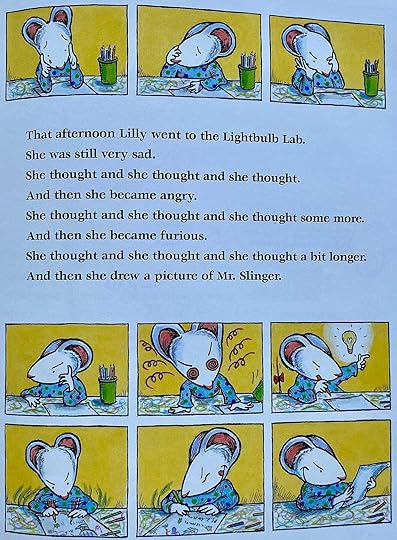
She draws a mean picture of her teacher, but on the way home she finds a nice note and some snacks from Mr. Slinger. She feels terrible, and the next day she apologizes. Lilly gets a do-over. When it’s time, she shows the kids her purse, but the rest of the day she keeps it hidden in her desk, just like she’s supposed to. It’s the perfect picture (book) of grace and second chances, and Lilly will charm your socks off.
The post Storytime: Self-Control appeared first on Meredith Davis.
September 2, 2024
Storytime: Gentleness
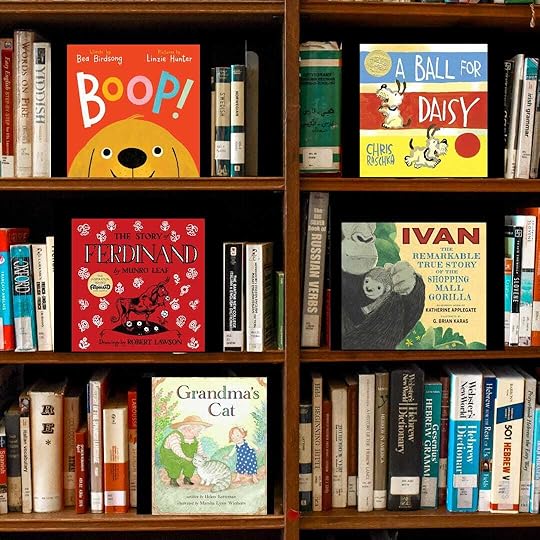
The idea of being gentle has come up a lot lately with my two-year-old grandson. He’s actually a pretty gentle little guy.
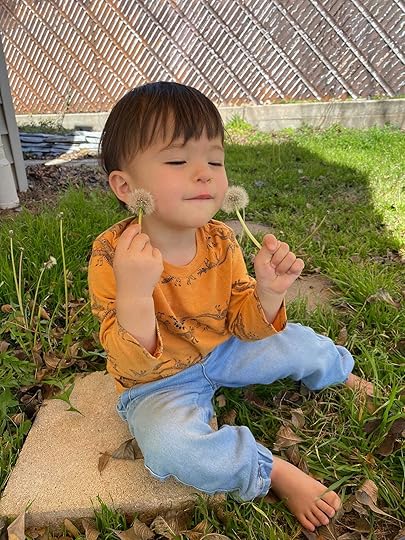
But even he has his moments. When we stayed at a rental recently with a pool table it was, “Be gentle, River, roll the balls like this.” We’d show him how to set his hand on top and give the hard ball a gentle push instead of picking it up and throwing it (sometimes on the floor). Be gentle with Humphrey (our doodle). Be gentle with Nana (that’s me). At a time when it seems far too many people are fighting, whether with weapons or words (and words can be weapons), gentleness can be a quiet, powerful force of good. Teach them young, and these kids will be different kinds of change makers. These books are some of the best examples of gentleness I could find, great for any age.
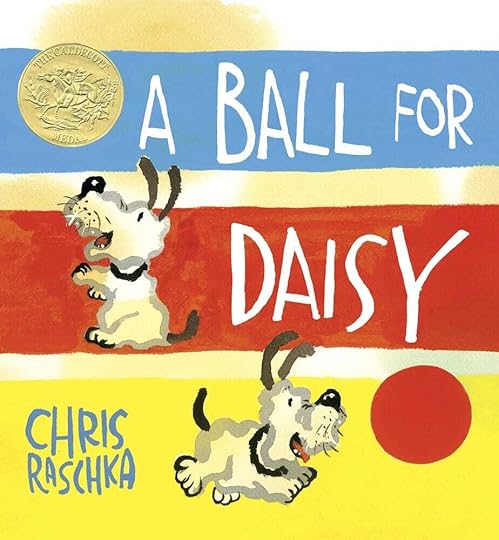
A Ball for Daisy by Chris Raschka
In this wordless picture book a white dog named Daisy plays and sleeps with the red ball she loves. Her owner takes her on a walk and they play fetch with the beloved red ball in the park, but then a brown dog comes along, snatches the ball, and it pops. That can happen when you’re not gentle.
This is a great book to share with a kid who needs to learn to be more careful with other kid’s toys. Daisy is forlorn, head and tail down as her owner throws the withered ball in a trash can on their way home. Poor Daisy. There’s this spread where she’s alone on the couch, her owner gently loves on her, but life just isn’t as sweet, until . . . on their next visit to the park the brown dog is there bearing a brand new blue ball. Joy! When mistakes have been made, they can be redeemed. They play together, and eventually Daisy and her girl go home with the pretty new ball, which Daisy snuggles up to on the couch. Even the pacing feels gentle, and very sweet.
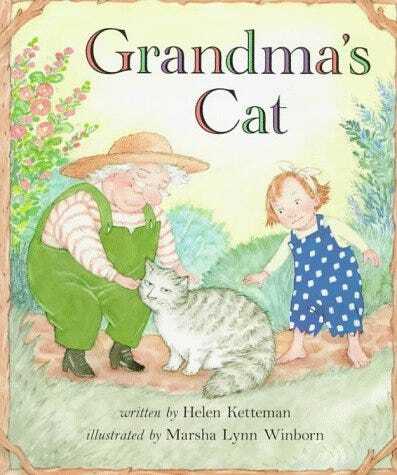
Grandma’s Cat by Helen Ketteman, illustrated by Marsha Lynn Winborn
My kids loved this simple, rhyming picture book about a girl who has to learn how to be gentle with her grandmother’s ornery cat if she wants to win his affection. I can recite it to this day,
Grandma’s cat
is round and fat.
He hides. I seek.
He scoots. I peek . . .
The young girl chases the cat, desperately wanting to cuddle. She doesn’t pick up on the signs, grabs the hissing cat’s tail, and gets a scratch on the nose. Kids can really relate to this one. Grandmother has sage advice, “just be very gentle and sweet to him, and he will like you.” And so the girl takes it slow, speaks gently, brings a treat, and is rewarded with the chance to pet and play and eventually sleep with Grandma’s cat, her new friend. Soft watercolors and a backyard world I’d love to visit make this a feast for the eyes and heart.
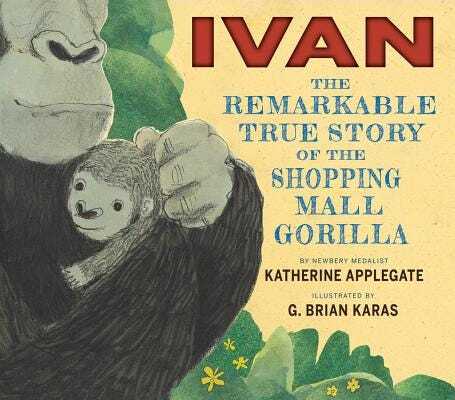
Ivan: The Remarkable True Story of the Shopping Mall Gorilla by Katherine Applegate, illustrated by G. Brian Karas
Maybe you’re familiar with Katherine Applegate’s middle grade book The One and Only Ivan. In this picture book she brings Ivan’s sad, dramatic, inspiring, triumphant, resilient story to younger readers. The brilliant Brian Karas shows us Ivan in his mother’s arms on the first page as the text reads: In leafy calm, in gentle arms, a gorilla’s life began. I like how gorillas, so big and powerful, are shown as gentle. Ivan plays and learns with his troop until the day poachers come, definitely not gentle, and he’s captured along with another baby gorilla, who eventually dies. So, so sad. Ivan sits huddled alone on a mostly blank page. Karas is really brilliant at illustrating even the hardest moments with sensitivity. He is gentle with young readers (and old).
Ivan spends three years living in a home with humans, treated like just another little kid, until he gets too big. He is moved to a cage in the mall where he’s bored watching TV, playing with an old tire, finger painting and watching the humans that watch him. Finally, enough people get upset about his conditions that 27 years later, he’s sent to a new home at Zoo Atlanta with lots of green spaces and other gorillas. Yay! In leafy calm, in gentle arms, a gorilla’s life began again. Sigh.
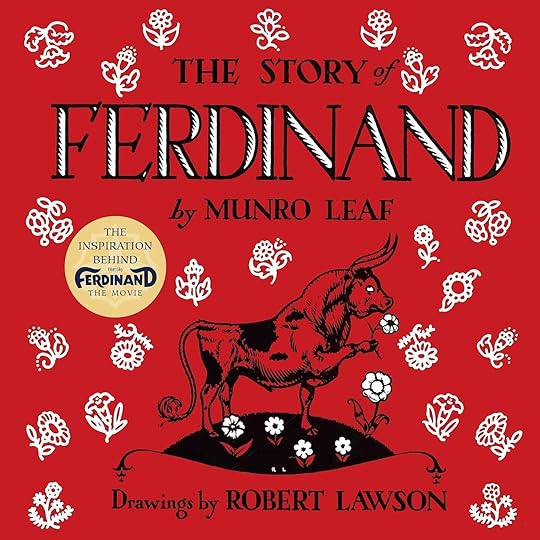
The Story of Ferdinand by Munro Leaf, drawings by Robert Lawson
This is one of those oldies but goodies that should never go out of print. The drawings are all black and white and play with perspective in fun and quirky ways. All the other little bulls he lived with would run and jump and butt their heads together, but not Ferdinand. Ferdinand likes to sit quietly and smell the flowers. He’s a gentle bull, even after he grows big and strong.
One day out by the cork tree where Ferdinand likes to sit and smell flowers, he sits on a bee just as men are looking for the roughest bulls to bring to the bull fights in Madrid. When he gets stung Ferdinand snorts and puffs and paws the ground like he’s crazy, so he’s chosen for the fights. On the big day, all the ladies have flowers in their hair. (Remember that.) In comes the fighters with their sharp pins and spears and red cape. What will such a gentle bull do?
Ferdinand smells the flowers in the ladies’ hair, sits down and inhales, enjoying the beautiful scent. The fighters are mad and end up sending Ferdinand back home. This is an ode to gentleness, and defying expectation. Just because you’re a bull, or a two-year-old, doesn’t mean you can’t be gentle.
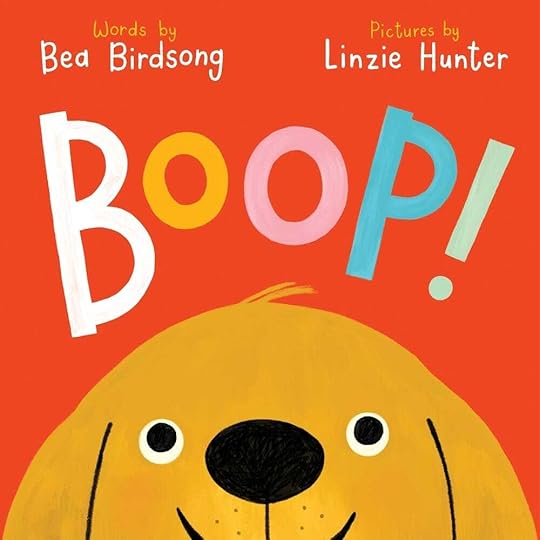
Boop by Bea Birdsong, illustrated by Linzie Hunter
There are stories about gentleness, and there are books that actually, physically, teach gentleness. Actually, there may be only one that teaches it. BOOP! A boop is a gentle pat. A gentle tap. Then the reader is instructed to get their finger ready and . . . page turn to a smiling dog with a big arrow pointing to his snoot (nose) with the word BOOP!
Readers gets to celebrate booping the snoots of all kinds of dogs in this super interactive picture book. Do you have a kid who boops that snoot so hard he knocks the book on the floor? Try again. Practice gentleness that builds to a boopiest-boop bonanza and then, at the end, there’s one more snoot that needs a boop! You’re own! I can’t think of a better way to teach doing unto others the way you’d have them do to you than this playful book of adorable dogs that leads the readers right back to their own little snoots to boop.
The post Storytime: Gentleness appeared first on Meredith Davis.
Storytime: Faithfulness
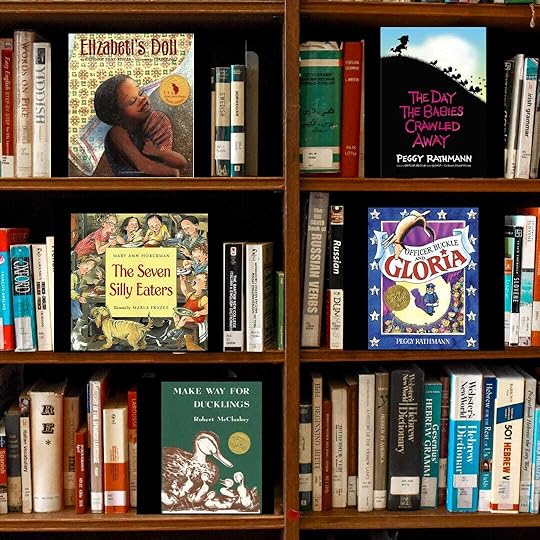
For new subscribers, some of whom I met at a recent homeschool conference, welcome to my monthly newsletter where I share themed picture book recommendations. My hope is to shine a spotlight on both old and new picture books through a specific lens, and offer a valuable resource to librarians, teachers, parents, grandparents, daycare workers, babysitters, and anyone else reading to kids.
And quick aside, I loved sharing Her Own Two Feet and The Minor Miracle with people at the conference. If you’re looking for a middle grade book that represents faithfulness, you’ll find it in spades in either of these books.
This month, we’re looking at picture books that represent faithfulness, whether they intended to or not. Maybe some of these titles are familiar to you, faithful friends on your shelves since your own childhood. Or maybe you haven’t made their acquaintance yet. Either way, I hope you enjoy sharing them with the littles in your life and together, you understand how faithfulness looks and feels.
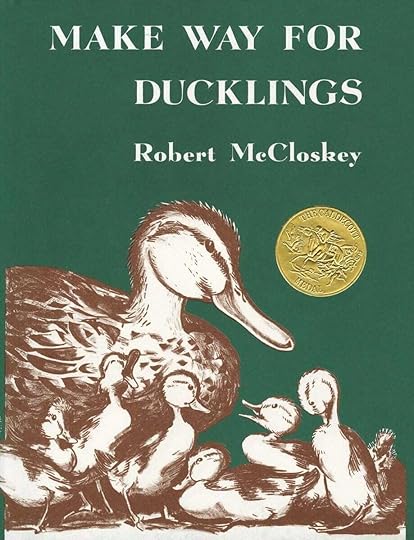
Make Way for Ducklings by Robert McClosky
Oh such an oldie and goodie! Mr. and Mrs. Mallard faithfully look for a safe place to lay eggs and raise their ducklings. They finally find the perfect spot, where a man named Michael feeds them peanuts and Mrs. Mallard lays eight eggs. She faithfully sits on them to keep them warm, not even leaving for peanuts, until they hatch. While Mr. Mallard goes ahead to the Public Garden, promising he’ll meet them in a week, Mrs. Mallard teaches her babies how to walk in a line and come when called, valuable skills when they set out for the Public Garden.
They must cross a busy highway and Michael, their faithful, peanut-sharing friend, runs to stop traffic. They continue on their way through the city, all in a line with Mrs. Mallard leading the way as Michael calls for police help at another busy intersection. When they finally get to the Public Garden, Mr. Mallard is waiting for them, just as he’d promised. What a gift it is to have faithful parents and friends. They are certainly lucky ducks 
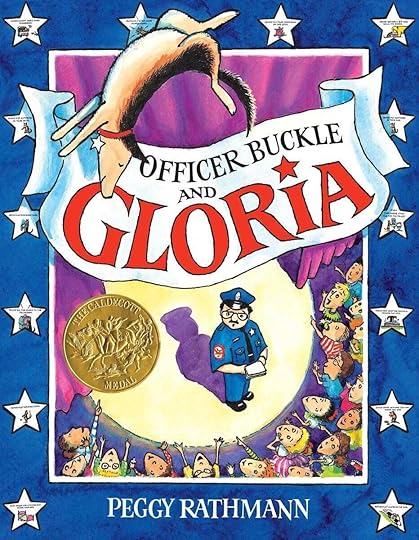
Officer Buckle and Gloria by Peggy Rathmann
This one is such a great read aloud with tons of humor and fun illustrations. We meet Officer Buckle, who shares safety tips with students at Napville School. But the kids find him boring, they snooze during his talk, and all sorts of disasters ensue. Then one day, a dog named Gloria joins him. All the kids sit up and take notice.
Officer Buckle doesn’t realize it, but while he talks, Gloria stands behind him and acts out what he’s saying. When he turns to look at her, Gloria innocently sits at attention. He doesn’t realize Gloria is the actual star of the show, and the reason for the sudden popularity of his safety talks all around town, until one night he sees a video of his talk on the news.
Feelings hurt, Officer Buckle stops doing safety talks and Gloria goes alone. But without his tips, she has nothing to act out. She sits on stage, head down, and the kids go back to napping, which leads to the biggest disaster of all. The next day Office Buckle gets letters from the kids describing the disaster and telling him that Gloria misses him, and so the two make up. The story ends with safety tip #101, “Always stick with your buddy!” A faithful friend makes all the difference.
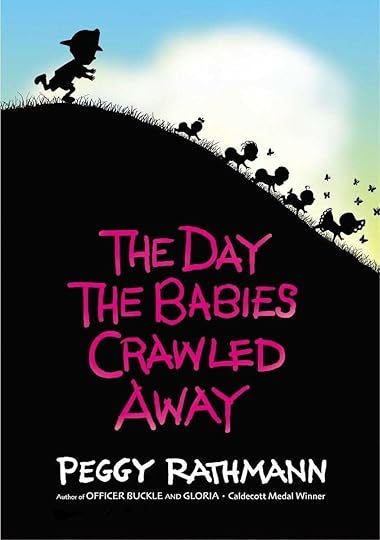
The Day the Babies Crawled Away by Peggy Rathmann
I feature two Peggy Rathmann books this month because she’s brilliant, and whether she knows it or not, she speaks to faithfulness quite a bit in her books. The story is told in black silhouette against bright skies, and starts with moms and dads eating pies, the babies seeing some butterflies—
And what do you know?
Surprise! Surprise!
The babies crawled away!
One young boy notices and follows them, and the narrator (we find out later it’s the boy’s mother) tells the story of that spectacular day in second person, speaking to the boy. Unusual, and brilliant. The rhyme is fun as we follow the babies into the trees where the babies chase bees, and into a bog where they chase frogs, all the time ignoring the boy who faithfully follows them, catches them when they fall, feeds and naps them, and finally, elaborately returns them using a sling made from diapers tied into a sack.
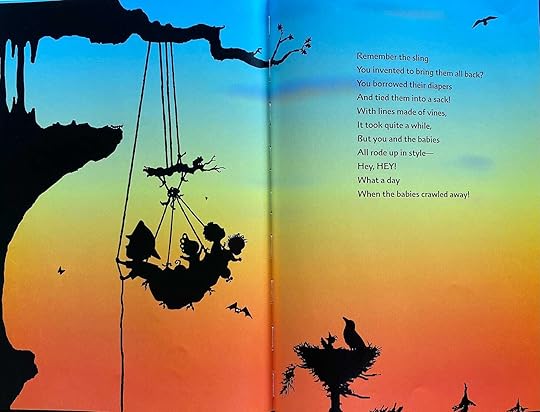
In the end the babies are returned and the mother takes the small boy home, faithfully holding her son until he falls asleep. Oh, I love it so.
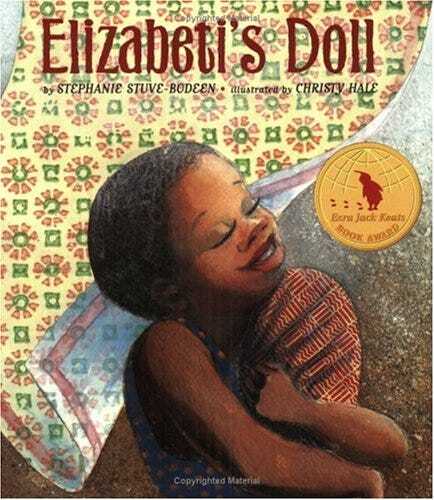
Elizabeti’s Doll by Stephanie Stuve Bodeen illustrated by Christy Hale
Set in Tanzania, this is a story about mothering, a task requiring great faithfulness. It’s lovely in that it is both universal and foreign. Children the world over pretend to be mothers and fathers, imitating their parents, but in Elizabeti’s world there are no stores with dolls lining the shelves. That’s fine. A rock will do. Elizabeti names her “baby” Eva. She goes through the day side by side with her mama as they bathe and burp and do their chores. Mama has baby Obedi tied on her back with a kanga, and Elizabeti has Eva, her rock baby, tied on just like Mama.
Later, Elizabeti leaves Eva in a rock pile (so she’ll have some company), wraps her kanga into a bundle, puts it on her head and balances a jug on it to fetch some water. When she gets back, Eva is gone! She’s heartbroken. No other rock could take Eva’s place. That evening, while preparing to cook rice, she sees that Eva is one of the stones around their cooking fire! With some help she rolls her precious baby away from the heat, cleans her off and hugs her. She will be a fine mother someday, faithful and true.
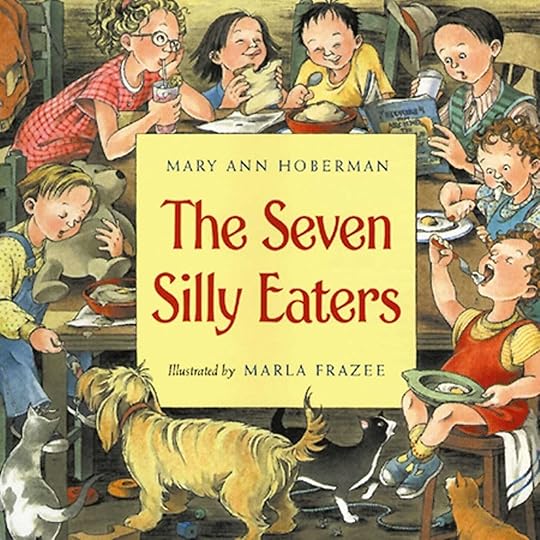
The Seven Silly Eaters by Mary Ann Hoberman, illustrated by Marla Frazee
If you’ve read other issues of this newsletter, you know I’m a huge Marla Frazee fan. I would love to live in the world she creates in this book. The Peters live in a sweet, simple house with a front porch, surrounded by trees and with a dock out back for jumping into the lake (ocean? river? doesn’t matter, it’s water).
Mrs. Peters starts off with just one picky eater, Peter, who will only drink warm milk. Not hot, and not cold. So that’s what she makes for him. She keeps having kids, seven of them, and each has only one thing they will eat, and it’s always something different. Her patient husband by her side, she does what it takes to keep her kids happy, cooking each one his or her favorite. For a while, it’s okay. They have fun together, and they’re a happy family. Until one day, the night before her birthday, Mrs. Peters is a wreck. So is her house. The family looks on in concern as she totally loses it in the kitchen, head thrown back, arms and legs splayed, as she yells her frustration and weariness to the heavens and the dog and cat run for the hills.
Mom goes to bed and the kids have a meeting in the coolest bedroom you ever did see, a loft with beds tucked in every nook and cranny. They head to the kitchen where each uses the thing they love best to try and make something for their mother, but it’s harder than they thought. The kitchen is a mess and they’re sure they’ve screwed it all up. Disappointed, they shove their concoction in the oven to hide it, and head to bed. The next morning, mom finds,
in the oven, no mistake,
a pink and plump and perfect cake!
All her faithfulness is finally rewarded with gratitude and the happiest ever after you ever did read. From that day on, the whole family is fed with one simple meal they all take turns preparing and all agree is delicious: Mrs. Peter’s birthday cake! Cake at every meal and happy, content, grateful kids? Faithfulness has its rewards.
The post Storytime: Faithfulness appeared first on Meredith Davis.
July 22, 2024
Storytime: Goodness
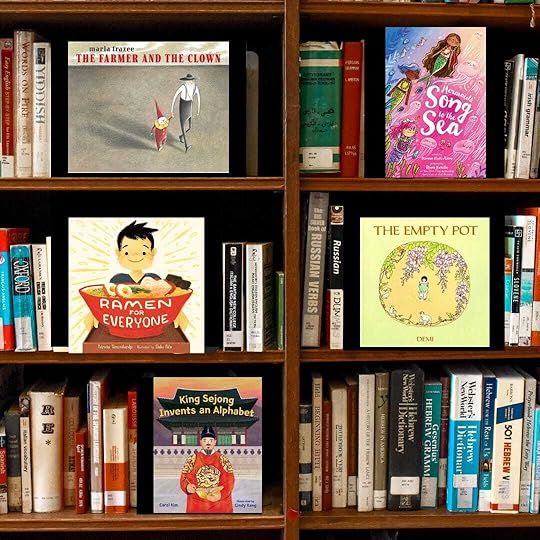
My grandmother used to say, “goodness, gracious, sakes alive!” when she got excited about something, but I never really thought about the words and what they meant. Webster’s defines goodness two ways. There’s “the quality of being morally good or virtuous” and “the beneficial or nourishing element of food.” Righteous. Delicious. It’s a fruit of the spirit, sweet as one of the Fredericksburg peaches being sold on the side of the road in Texas. This month I bring you sweet read aloud picture books that somehow represent goodness. It could be found in ramen, flower pots, the Korean alphabet, mermaid lullabies, farmers and clowns. Goodness, gracious, sakes alive, these stories are amazing!
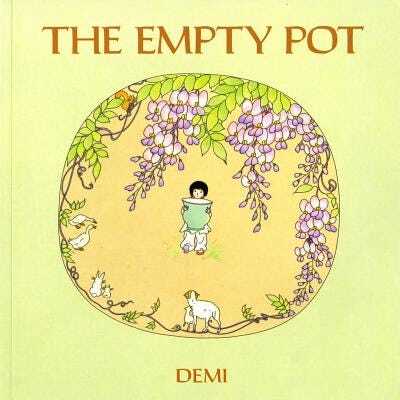
The Empty Pot by Demi
This story starts a long time ago in China, where a boy named Ping lived. He loved flowers, and anything he planted blossomed. Everyone in the kingdom loved flowers, even the Emperor, who tended his own garden. When it came time to choose a successor, the Emperor decided to “let the flowers choose” who it will be. All the children in the land are invited to the palace and given special flower seeds. Whoever can show the Emperor their best in a year’s time will inherit the throne.
Ping does everything right, good soil, good water, and he’s sure he’ll win, but nothing grows in his pot. He tries a new pot. Still nothing. The words grow scarce on the page and each illustration, framed in a circle, shows poor Ping and his empty blue pot. Soon the year has passed, and still nothing. When spring comes, all the children rush to show the Emperor their flowers, and Ping is ashamed, but his father tells him, “You did your best, and your best is good enough to present to the Emperor.” Such wisdom. So Ping goes to the palace, where the Emperor frowns at all the kids with beautiful flowers. Then we turn to this brilliant spread with a mostly empty circle on each page. Like we’re looking down into an empty empty.
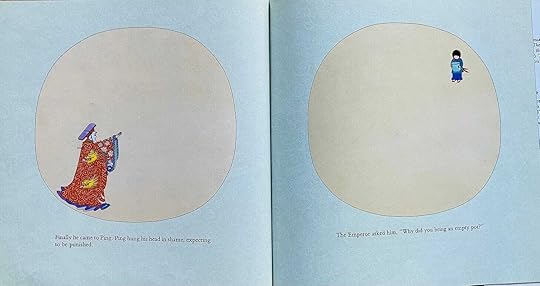
Ping cries as he explains how he tended the seed the best he could, and how an empty pot is the best he could do, but the Emperor smiles and says he’s found his successor. He reveals that the seeds had been cooked. They couldn’t grow! The kids lied about their flowers! Only Ping told the truth. I’ve read this book at dozens of story times, eyes are always glued to the page, and you can sense how kids identify with Ping. Everyone has experienced unfairness and it’s so . . . unfair! The Emperor says, “I admire Ping’s great courage to appear before me with the empty truth.” Ping rides off in a fancy chariot topped with beautiful flowers, justice is done. It’s so good to see truth win in the end.
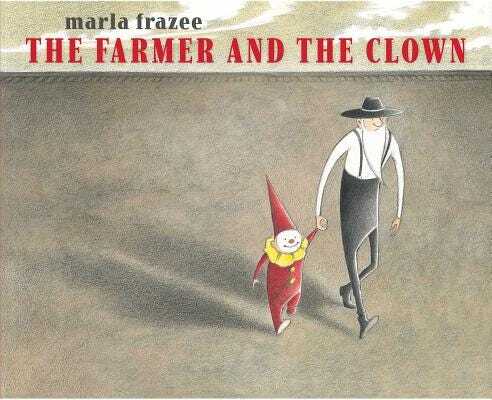
The Farmer and the Clown by Marla Frazee
Oh how I love Marla Frazee. She is brilliant at storytelling, evoking so much tenderness and emotion. This wordless story starts with a grumpy farmer in the fields, thrusting a pitchfork into some hay. A colorful train passes by, and he’s shocked to see someone fly off the back. The train doesn’t stop, so he goes to investigate and meets a smiling little clown who hugs his legs and takes his hand.
The farmer works to comfort the little clown and they work and play and picnic together, until finally a small smile creeps onto the farmer’s face. Then the train returns. The farmer and clown dash hand in hand across the field, the train stops, and the clown’s family surrounds him with love and hugs as the farmer watches, hands clasped behind his back. And then a lovely spread, where the tiny clown runs back to the farmer, who picks him up, hugs him tight, and kisses him on the top of his head.
The train drives off, everyone waving, and the farmer walks home alone, hands in pockets, looking a little sad. But there’s hope for a new friend as a monkey follows behind, furry finger to his lips, warning the reader not to spoil his surprise (see books two and three in this sweet series to see what happens next). This story is wistful and hopeful and full of the goodness that happens when you drop what you’re doing to tend to someone in need, and the power of connection.
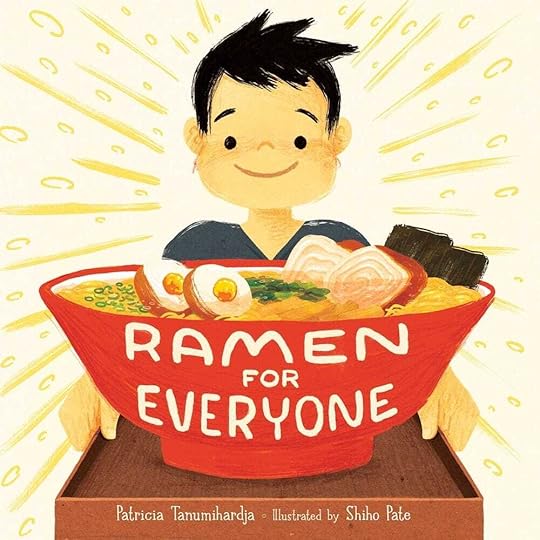
Ramen for Everyone by Patricia Tanumihardja, illustrated by Shiho Pate
I actually bought this book as an anniversary gift for my husband after a trip to Japan, where we had the most delicious ramen. It will make your mouth water as you read about the most perfect ramen made by Hiro’s dad (who grew up in Hawai’i). With a black cloth tied around his head he CHOPS, SIMMERS and SEASONS! The words and images feel like they’re lifted from the pages of a superhero comic, and to Hiro, his dad is a superhero. He watches, taking notes and responding to his dad’s quizzing questions. The secret to a rich, flavorful broth is patience. The noodles should be soft and springy like an earlobe. And there should be a choice of toppings, because “you can’t argue with taste!”
But when Hiro decides to try and make the perfect bowl of ramen for his family, the broth is bad and the noodles aren’t springy. “You got this!” encourages his dad (so good), but Hiro’s toppings are a fail, too. Hiro throws it all in the trash, but his dad sits cross-cross applesauce on the floor with his son and tells him he can still make special ramen. So Hiro comes up with a solution and serves each person in his family what they like. Just because it isn’t perfect doesn’t mean it isn’t good.
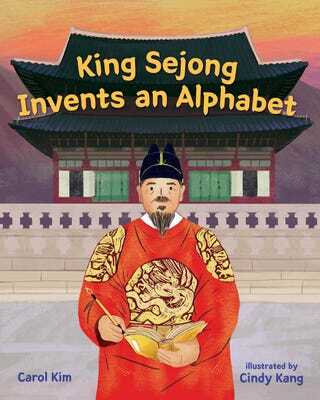
King Sejong Invents an Alphabet by Carol Kim, illustrated by Cindy Kang
This book tells such an important story. Imagine most of the people in your country are illiterate. Kids and their parents and their grandparents never learned to read or write because there is no alphabet, no simple path to literacy. Not good. That was Korea a long time ago, and those in power, liked it that way. Really not good. Knowledge is power, and they didn’t want to share it,
King Sejong, born in 1397 to a royal family, was taught to read and write Hanja, complex Chinese characters that were very difficult to learn. When he became king, he wanted to help the underprivileged, so he set out to invent an alphabet. He worked in secret for ten years so the rich and powerful wouldn’t stop him. Finally, he released his alphabet of twenty-eight letters, and called it Hangeul. Now anyone, even the most poor, could be literate. They could write to protest unfair laws, read about farming techniques, send letters to loved ones, and read stories. And that was so, so good.
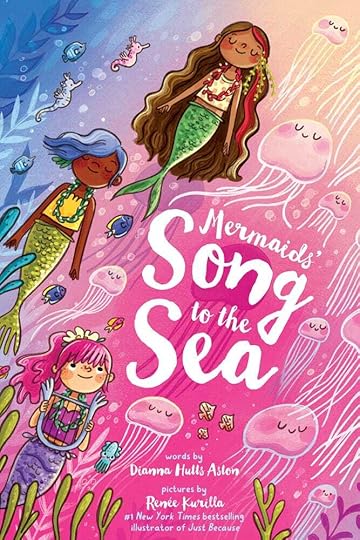
Mermaid’s Song to the Sea by Dianna Hutts Aston, illustrated by Renee Kurilla
This book is filled with bright illustrations and good (great) rhyme that we’ve come to expect from Dianna Hutts Aston (who happens to be a good friend of mine :-)). This line sets us up:
Three mermaids
with harps and leis
sing to the sea
at the end of the day.
They bless clams in their beds, lobsters in their pods, sharks in their shivers and squids in their squads. Don’t you just love it? Who wouldn’t want to travel undersea with three sweet mermaids, through blooms of jellies, finding hiders and peepers to bless. At the end, we see these three “mermaids” tucked into sleeping bags, sea things scattered all over the room. I can just picture the three girls bopping around before bedtime, finding new things to bless, and then drifting into dreamland under the sea.
The post Storytime: Goodness appeared first on Meredith Davis.
June 5, 2024
Storytime: Kindness
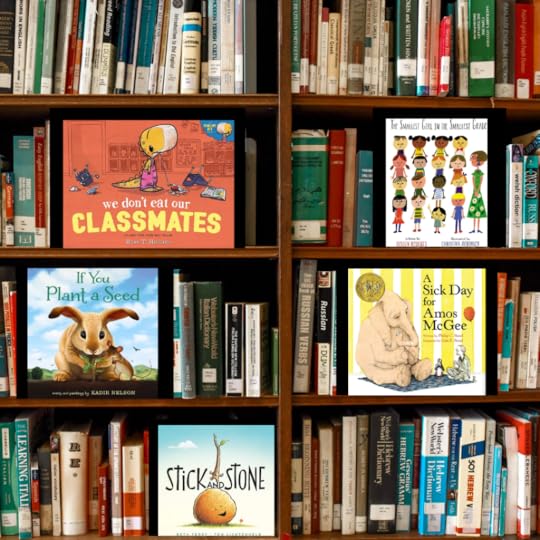
I recently had a friend text me asking if I had any suggestions for books on kindness. Her boy and some friends were excluding some kids at school and she wanted to address it now, tenderize his heart. I have so much admiration for her vulnerability, and her acknowledgement that a powerful way to impact our kids is through story. I found myself exploding with suggestions as I went to my shelves, and I’ll share a few below.
Also, I just want to say thank you for all your many, many kindnesses, from personal messages, to pictures posted and reviews written and the 100+ people showing up for the launch party for my most recent middle grade release, The Minor Miracle.
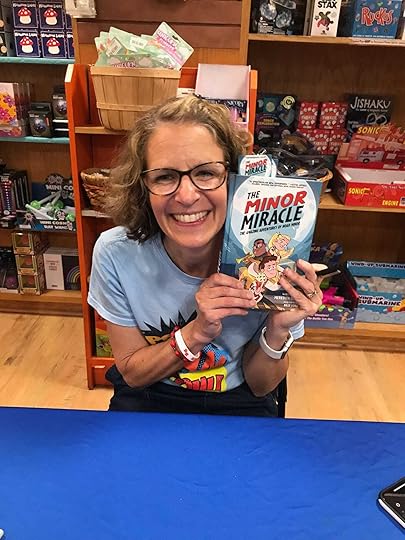
It has truly been a miracle to see how this book came to be published, and how it is now going forth into this world. It’s all about a kid who finds out he has superpowers, and how we all are super powerful. Whether it’s choosing not to eat your classmates, sharing, sticking up for a friend or making time to visit a lonely owl, these books are filled with superheroes who choose kindness.
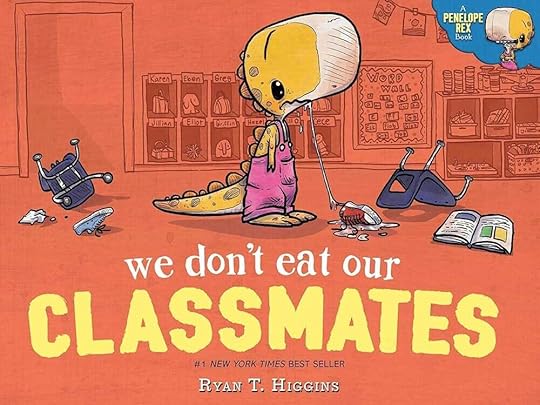
We Don’t Eat Our Classmates by Ryan T. Higgins
If you haven’t met Penelope Rex yet, you’re in for a treat. And if you have (there are four books about her), you’re probably smiling right now. This book makes me laugh so hard. The set up: Penelope Rex is nervous about starting school. She wonders and worries and gets a new backpack with ponies on it, which are her favorite. Because ponies are delicious.
There are great page-turn-surprises, like when Penelope opens the door to her classroom and finds out her classmates are CHILDREN! So she ate them. Because children are delicious. Crack. Me. Up. The illustrations are equally hilarious.
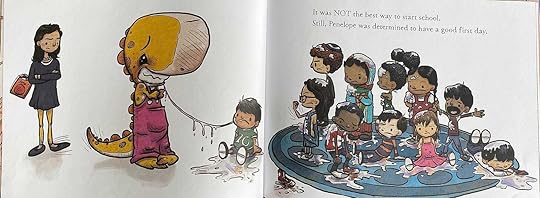
And it’s all rooted in a very relevant issue kids (and adults) face. How do you make friends? Hint: it’s not by eating them, or doing what you want with no regard for the people around you. Then one day the class goldfish bites Penelope’s finger. She realizes it’s not fun to be someone’s snack and becomes empathetic, sharing and playing and being kind instead of carnivorous. Kindness may be hard sometimes, but it’s worth it!
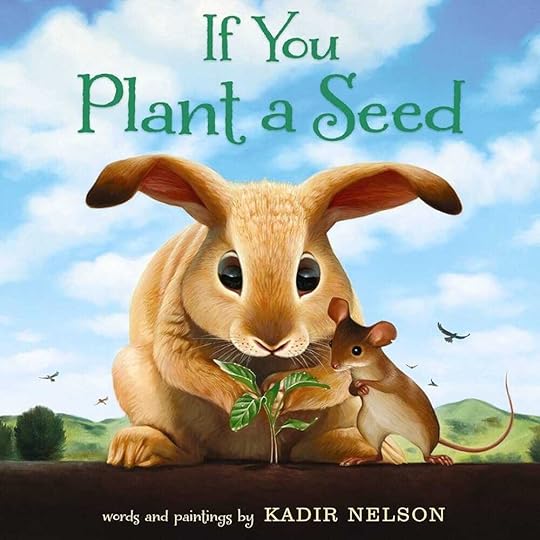
If You Plant a Seed by Kadir Nelson
I love Kadir Nelson’s art, so expressive, and I love how this book does so much with so few words. In just eighty words, to be exact. What you sow is what you reap. Carrot, tomato, and cabbage seeds, with time and love and care, bring forth carrots, tomatoes and cabbage. The rabbit and mouse rejoice, and munch, and then along come the birds. They stare at rabbit and mouse. We know what they want, but in a brilliant wordless double page spread, they break the fourth wall and we see their intense gaze from the perspective of rabbit and mouse. They want some of those veggies . . .
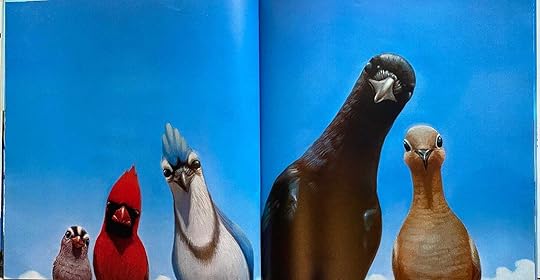
Then a brilliant transition to a great truth. If you plant a seed of selfishness, in a very short time, it will grow, and grow, and grow into a heap of trouble. There is fighting, and the food is ruined. Nobody wins. But if you plant a seed of kindness . . . we see mouse give one of the birds a tomato. Then all the birds take flight, and return holding bags filled with seeds which drop from the sky like confetti. The middle schooler in me wonders if the seeds falling from the birds are a symbol for bird poop, which really does sow lots of seed. Whether it’s a symbol or not, what’s certain is the powerful message that kindness bears much fruit. Sharing doesn’t deplete. It multiplies, and the result is very, very sweet.
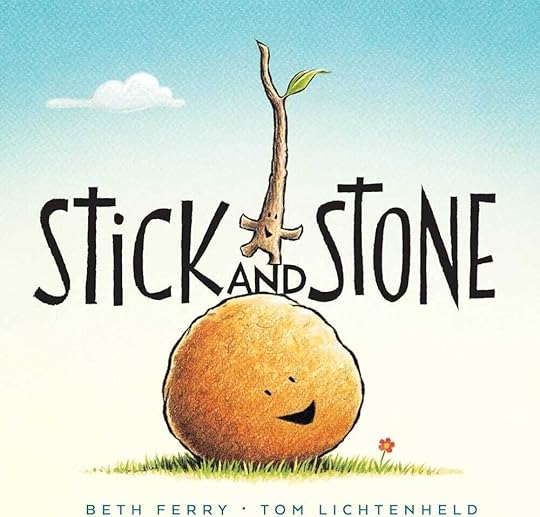
Stick and Stone by Beth Ferry, illustrated by Tom Lichtenheld
This is another super short book with a powerful message told in simple rhyme. Stick and stone start off lonely and alone. But when pinecone comes along and makes fun of stone, stick stands up for stone (a great kindness). Pinecone walks off in a huff and a new friendship blossoms as stick and stone hang out. Is there anything cuter than a rock with eyes closed tight, tiny mouth puckered to blow bubbles with his friend? But then a storm comes and the wind blows stick (and pinecone) away. Stone is alone again. He searches day and night, and finally finds his friend stuck in the middle of a large puddle. So stone launches himself and with a KER-SPLASH! rescues his friend.
There’s a great little grace note at the end as the two friends walk off with a third new friend. It’s pinecone, who says, in the tiniest of text, “Sorry I needled you so much.” Humor and sweetness all packed into a brilliant picture book you could read to the most wiggly toddler, or gift to a beloved adult. Our copy is inscribed to our son who was eighteen at the time, with the words You are a good friend to many, loyal and kind, one of the many reasons “you rock!”
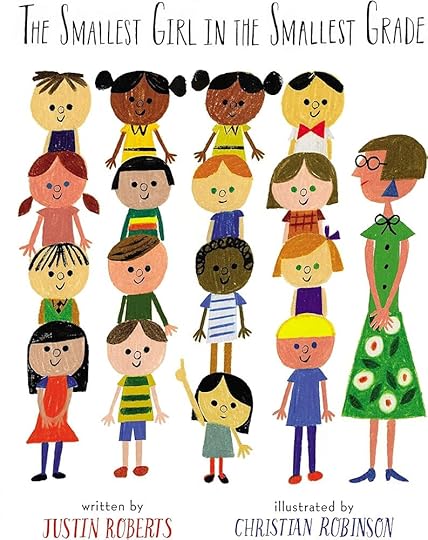
The Smallest Girl in the Smallest Grade by Justin Roberts, illustrated by Christian Robinson
This book speaks to my heart, makes me tear up, and cheer, YES!! Christian Robinson creates great art, again and again, and with clever rhyme Justin Roberts introduces us to Sally McCabe, the smallest girl in the smallest grade. She goes through the school day unnoticed, but she’s paying super extra special attention. Who would think of that as a superpower? It is. She notices an abandoned kite with a tangled string and keys on a janitor’s ring, things that come back as clever metaphors later in the story. She also notices kids who get bullied, and one day, she’s had enough.
On a particular day (February 3rd), at a particular time (11:29) she steps out of the lunchroom line, raises her hand and says she’s tired of seeing kids hurt each other. A few laugh, but then something super extra special happened. Other kids raise their hands in the air, then the lunch lady, and a new teacher, until soon the lunchroom is filled with fingers pointing to the sky, saying, “I agree. Enough. Stop being unkind.” I get chill bumps reading how this small girl makes people take notice of injustice, which leads to new acts of kindness. The world could transform and a change could be made by the smallest girl in the smallest grade.
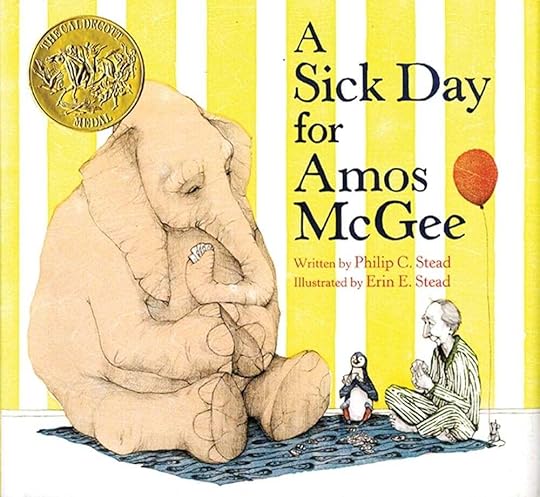
A Sick Day for Amos McGee by Philip C. Stead, illustrated by Erin E. Stead
I am in love with the dynamic duo of Philip C. Stead and Erin E. Stead, and I’m in love with Amos McGee and the menagerie of animals we meet in this book. Amos gets up early each morning, puts on his uniform and thanks his sugar bowl for the spoonfuls he puts on his oatmeal and in his tea. Right off the bat, we know he’s kind. He’s also peaceful. He doesn’t rush off to work. He ambles out the door. He affirms the bus driver, who arrives at 6 a.m., saying he’s right on time. What a great way to go through life.
Amos had a lot to do at the zoo, but he always made time to visit his good friends. It is a kindness we can all do, small, and yet powerful. Amos plays chess with the elephant, runs races with the tortoise (who never loses, in the illustration a mouse and bird are cheering him on, soooo much kindness in this book). He sits quietly with penguin, gives rhino a hankie when his nose runs, and reads stories to the owl, who was afraid of the dark.
Then one day Amos wakes up feeling sick, so he doesn’t go to work. The animals are lonely, so they leave the zoo, wait for the bus, and go for a visit. They tend to their friend, playing chess, sitting quietly by his side, wiping his nose and as night falls, cuddling up around his bed as the owl reads a story and they all fall asleep. When we are kind to others, we receive kindness in return. It is true, it is good, and it is beautiful.
The post Storytime: Kindness appeared first on Meredith Davis.



